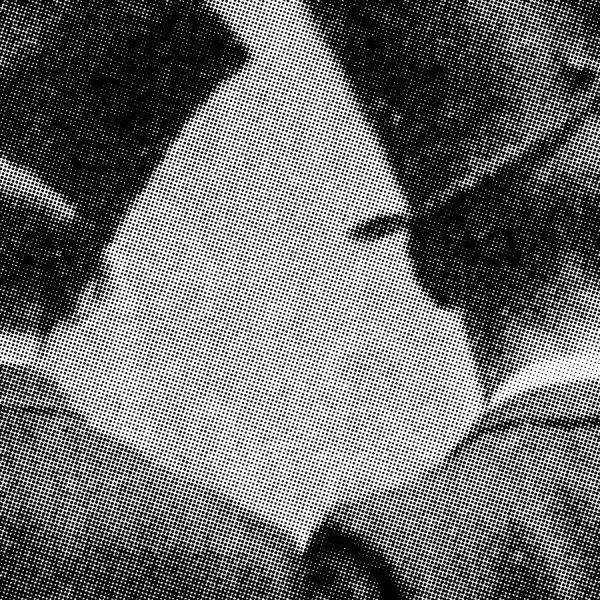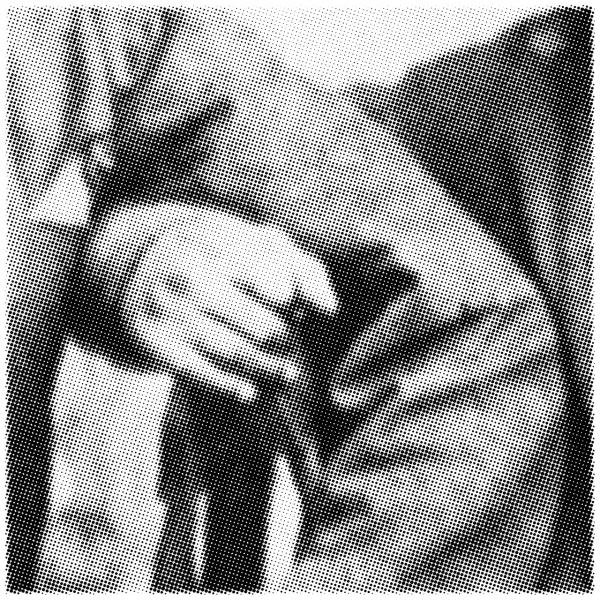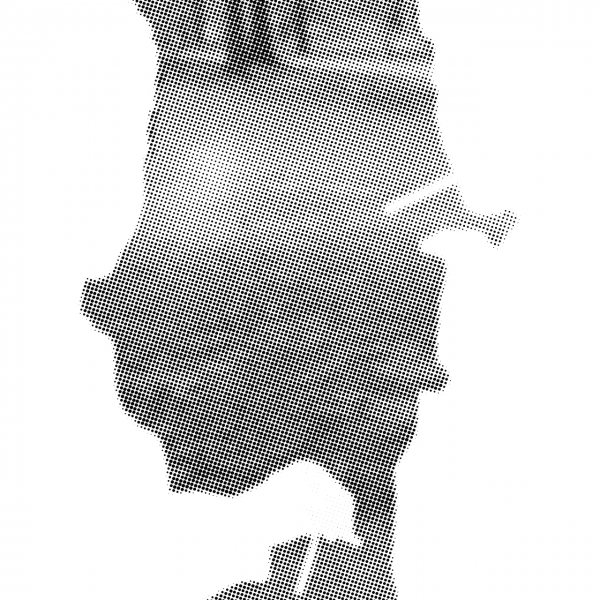1
Avery
You have been thinking about friendship quite a bit and you’ve written at least two texts about it, including a conversation you published with the philosopher Johan Hartle2. Why?
Céline
As you know, I’ve had a long-term interest in support and support structures.3 I believe friendship to be one of the most fundamental forms of support in practice. When I was working on my book Support Structures4 friendship was opening up all kinds of questions but it was too big of a subject for me to address in one chapter. The primary motivation for writing the texts you mention was to start to directly explore the idea of friendship.
I started by looking at how it appeared in philosophical discourse and immediately I encountered two hurdles: first, no women philosophers have ever written about friendship—which is still unbelievable to me. And second, all these beautiful philosophical texts written by men explicitly exclude women and slaves from the realm of friendship. So, to begin, I had to ask how I could work with the conditions given to me, and whether I would need to invent a discourse of friendship based on those amongst the excluded. Another aspect that was important to me was to address friendship in action, to think about it as a practice. The philosophical tradition demands defining what friendship is in theoretical or abstract terms, but I was interested in how to be and work in friendship, in inhabiting it as a condition.
I’ve been thinking about friendship on two levels that I’m not sure can be entirely reconciled. One level of it is as a way of associating yourself with other people. The reason why we’re sitting together talking is also because we are friends: and we’re working together at the same time. Another level has to do with friendship as a way of associating yourself with ideas or befriending issues. What Hannah Arendt called “this thinking business” (her description of the work that she and Mary McCarthy did individually and in relation to each other), is done from a position of closeness to something or someone and it requires a particular proximity that I believe is fundamental. In other words, there is intimacy in relationship to people, and also in relation to issues, that I would call friendship.
What ideas, issues and people do we want to spend our time with?
[She holds up a book]
Why did you bring this book to our conversation?
Avery
I brought John Hope Franklin and Loren Schweninger’s Runaway Slaves: rebels on the plantation (Oxford UP 1999) because when I read your interview with Johan to prepare for our conversation, I was interested in your remark that philosophers had excluded slaves from the domain of friendship. Of course, in most slave-holding societies, slaves suffer various civil and social disabilities; a slave holding society in general treats the slave not as a friend but as property or labor or stranger or barbarian. In a slave holding society like that in the United States, the slave was treated as a complete non-person—a non-human human being—and was legally prohibited from free association, from kinship, from reading and writing and so on.
John Hope Franklin is one of the most venerable African American historians and this book is a careful and detailed account of how slaves managed to run away, where they went, who helped them, how they avoided (or didn’t) capture. It makes abundantly clear how necessary friendship and friendly support was for both surviving and, if undertaken, successful escape from plantation life.
Friendship, working well together, helping out, solidarity, keeping secrets: these were crucial aspects of African American slave culture because the absence of public recognition and support (worse its criminalisation for black people) meant that you had to create your own systems of support within your own cultural milieu. You’ve been taken captive and the state and society are organized around keeping you enslaved and so obviously they cannot be trusted with your well being. This is a dangerous situation for people and something of what you’re calling friendship and support is utterly essential, and necessarily secret, visible only to those who can be trusted. Necessary for teaching or learning how to read and write or for marrying or maintaining kinship relations or keeping your old name still spoken. Necessary for stealing some food for the road or turning a blind eye when someone else does. Necessary for all that’s involved in getting on and travelling the “underground railroad”—the network of routes, safe houses, and assistance—that black, and white, abolitionists maintained.5
Women, slaves, the lower classes, migrants—the exclusionary foundations of western notions of sociality are clear. And yet in many ways these groups of people provide one of the richest archives of friendship practices throughout history. Friendship has been treated by philosophers as an abstraction, and primarily as a cipher for theories of the political, which make it fundamentally exclusionary. We are speaking here of ways of thinking about friendship that begin from the practical activities of the excluded.
Céline
I had an intuition that it’s exactly amongst the excluded that more interesting models of friendship in practice can be found. Looking for women’s friendships, for instance, I found them among the suffragettes, and I also looked for models of friendship in my work on the Commons6. In both these cases, friendship works as a modality of social change, which can produce other forms of doing things, and these are more than just about work. The suffragettes were, or became, friends in their struggle to change women’s conditions, which is something we could call work—but also and mostly this was about how they wanted to live, and how they wanted other women to be able to live.
I went looking for mentions of friendships through letters and documents and again did not find it discussed explicitly, yet something that became apparent was the warmth of the dialogues, the clear solidarity imbedded in the acting together, the small gestures of personal kindness included in what I would call a larger care towards women’s conditions. It struck me how few individuals emerged from the movement as clear representatives or spokeswomen, which was also true in relation to the Greenham Common’s women’s peace camps, where solidarity rather than hierarchy predominated.
Avery
19th-century women’s friendships were an important research topic for early second-wave women’s historians—in part because the intimate and elaborated world of women’s friendships was a bit of a public secret. People knew but didn’t know that friendships kept non-working women from going mad in their restricted private lives, kept working-class women from disaster and drowning in work, and also provided a respectable cover for lesbian women to love and live together. Women’s friendships were also important to the second wave because they were seen as anti-patriarchal, a way of shifting one’s investments and attentions away from a male-centered existence and way of life.
We are finding other references or models for thinking about friendship…
Céline
… with people who are subject to exclusions and restrictions of various sorts, like the women who fought against nuclear militarisation with knitting and face paint, and the runaway slaves who formed their own self-governed communities.
Avery
Yes, the maroons and the quilombos7, who also model a particular kind of ‘utopian’ politics, again based on solidarity and horizontal relationships. Pirate societies like the ‘pirate utopias’ Hakim Bey wrote about8, or pirate culture aboard ship, as Marcus Redeker has shown9, have interesting and elaborate friendship systems and rules for maintaining solidarity and equality in piracy. These are all other references than those made by philosophers for thinking about friendship.
One of my favourite examples are Jacques Rancière’s ‘bad’ workers—all those militant poets, artists, and workers in the 1830s and 40s who formed these little friendship circles, hanging out together and trying to figure out how to lead a life in which they didn’t have to be a worker. La nuit des prolétaires : Archives du rêve ouvrier (1981)10 is my favorite book of Ranciére’s. It’s a very beautifully researched and written book and it’s also very mischievous. Rather than finding one’s freedom or liberation in the degraded terms in which you are oppressed, these workers rejected the whole workerist ideology that dominated political thinking then (and still does to a large extent). They said: ‘we want to paint, to write poetry, to philosophise, to wander around thinking about the world, about beauty, about … ‘.
I’m very interested in the politics or more precisely the onto-epistemological affects (the lived political consciousness) of disidentification. That’s to say when you disidentify with what they want or expect you to be (whoever the ‘they’ is in any given situation) with whom, then, do you make friends or common cause? What options are available to you? You mentioned the suffragettes earlier—women rejecting traditional domestic roles for women and fighting for the right to vote and to work and to own property. Although many of these women were imprisoned and force-fed when they went on hunger strike, because they were—in the main—educated and from the middle and upper classes, their imprisonment was temporary and obviously political. And like other political prisoners, prison helped provide a context for further solidarity and organising. By contrast, at the very same time, poor women who refused to identify with and perform the roles assigned them as either good workers or good mothers or moral women were sent to workhouses for confinement and ‘correction’. We know far less about how these nonconformist women related to each other in the workhouses and debtor prisons—did they befriend each other or not? How did they talk to each other, about what? What ‘thinking business’ might they have done with each other? To answer these questions requires a bit of invention. For these women to get out of prison they would have had to persuade the authorities that they were ‘corrected’. This would have introduced an additional element of dissimulation into their lives and into the archive that we, today, must read around. Rancière’s bad workers were, well, at least recognised as workers. These women did not even have that recognition.
Céline
To return for a moment to La nuit des prolétaires, how did they form their little society? Did they all work to survive?
Avery
They worked—they were plumbers and cobblers and tailors and bakers and the men who emptied the sewers. They met at night, often staying up all night, drinking and talking and writing, which is why Rancière called the book la nuit des prolétaires—the night of the proletarians.
Céline
What’s beautiful about that is the suggestion that friendship is a way of doing intellectual labour together, and also as an escape from work, in order to become more than one’s work, more than a worker.
Avery
I agree. In effect, they were developing and modeling a way of living that was designed to abolish the divisions between mental and manual labor and between productive and unproductive work that are organic to capitalist work relations. And at least in Rancière’s very specific political interpretation in the 1980s, they were also…
Céline
They refused to be defined by just being a worker.
Avery
Exactly. And, in this sense, they also refused to be—for intellectuals—the model worker politically and offered a more complex and richer model for what worker solidarity means.
Céline
Who’s the friend of the bad worker?
Avery
The other bad workers!! [laughs]
So far, our experimental laboratory for theorising friendship includes women, slaves, runaways and pirates of all genders and sexualities. I’d like to add another reference. You know sociologist Asef Bayat’s book, Life as Politics: How Ordinary People Change the Middle East (2009)? He uses the term ‘quiet encroachment’ to describe the cooperative activities among the poor in the world’s largest cities, such as Cairo, where poor people must essentially take care of themselves because the state has abandoned them. Bayat says that quiet encroachment doesn’t call attention to itself and is oriented around ordinary practices of everyday life. It’s an interesting model of cooperation, it’s definitely a support structure or set of support structures, and it certainly involves a certain degree of friendliness in our expanded terms.
Céline
Well it’s very real and pragmatic. These are small and immediate actions that don’t have to do with a higher level of awareness of politics, but rather with accomplishing specific tasks and surviving today and tomorrow.
Avery
I think that Bayat’s point is that there is a highly developed awareness of politics and this awareness in part produces the specific ‘quiet encroachment’ models by which people get what they need and help each other out. In Cairo, for example, five friends or relatives or neighbours can help a family build an illegal apartment in two evenings without being caught. It takes a great deal of knowledge to make this happen hundreds of times all over the city: practical building knowledge, knowledge of the city and its resources and housing policies, and political knowledge too. The political awareness is embedded in an attenuated form in these other knowledges and in the common practices shared by people who are usually not (yet) organized as political actors. Bayat says that much of the preparation for organised collective mobilisation is invisible, but is happening nonetheless. All of a sudden, there are a million people in Tahrir Square (which happened right after he published the book). People asked: ‘how could that have happened?’ But of course that’s the whole point of quiet encroachment: you’re not announcing the preparation because you don’t want to, or you don’t even know you’re preparing (yet).
Céline
The preparation is not announced in the terms of traditional politics. It’s just there as a support structure, and that’s another really interesting model for thinking about friendships offered by the excluded. Of course, this doesn’t undermine but rather sidesteps how important male friendships are, or the friendships of the powerful, between and amongst power and of those included by it. It’s the other friendships that offer more potential for us here.
Avery
They offer more potential if you’re interested in upsetting the order of things, because a certain kind of male friendship is also one basis for the perpetuation of unequal power and authority. A certain kind of male homosociality—the old boy’s club—characterises intimate circles of power where men make deals and trades and promote their friends and enjoy a comfort among themselves—and sometimes play scary games with each other too. And the Manichean notions of loyalty and inclusion that divide the world into friend or enemy is most assuredly a legacy of the great institutions men have invented and forced upon the rest of us—the military, the monarchy, the monastery, the prison, the factory.
Céline
We’ve traced a nice line here, in order to look at friendship as a model for working together. And the route to follow is exactly through those friendships that are excluded from the friendships of power, which is why the friendships amongst women, slaves and castaways are good pointers, good models. In all of these descriptions—whether it’s the bad worker, the 19th-century woman, or runaway slaves—friends help each other out, and in doing so also make common cause. Friendship is essential to understanding these cooperative relations and at the same time not separate from taking sides with the issues at stake, so that they are all forms of personal and political friendships. I would say in the cases we discussed, friendships work on both levels, which is interesting to me because perhaps that means they can provide real models of resistance to a system. Befriending issues is also the point at which the scale of friendship gets larger, at which while still being an elective affinity and working on a personal level, it also has consequences on a larger scale.
Avery
The bad worker, the runaway… We haven’t yet talked about imaginary friends, of which I have many. I think we would both agree that all friendships involve a degree of fantasy or imagination, and some might say that that the best friendships are those where the attachment to the fantasy is greatest. But, I mean the imaginary friends we invent.
Céline
I have some of those too, but they are usually historical figures, like El Lissitzky, with whom I have a really good friendship, [laughs], in my mind.
Avery
Lissitzky is an inspiring friend to have! I have a lot of friends that are characters in books, who are definitely my friends and have been so for a long time. When I was a child, my first friends were imaginary and they were very dear to me. I don’t think I would have survived the rather difficult family life I experienced without them. Even as a child, they were considered ‘childish’ and then later a pathology, but I was very loyal to them. Others were inventions or people who lived in my dreams.
They’re still important to me, and ask this question: when you are thinking whom are you talking to? Who is your immediate interlocutor? Who is your audience?
End of conversation: part one.
Part two will be published on howtoworktogether.org later in 2013.
ENDNOTES
1. Céline Condorelli asked Avery Gordon to have a conversation about friendship. Céline has studied the subject while Avery has not and so in what follows Avery is thinking aloud as she goes and Céline is more reserved. The conversation took place in Avery’s kitchen overlooking the garden on a sunny winter day in California. At the end, Avery promised to do some proper study and then talk again. Céline continues to try different ways of tackling the issue. The conversation was transcribed by Maryam Griffin and Céline and has been edited by Avery and Céline.
2. Céline Condorelli, ‘On Friendship’, Reprint, Mousse 32 (2012), and ‘Too Close to See’, with Johan Hartle, in Self-Organised, Open Editions (2013).
3. See the long-term project Support Structure with Gavin Wade, from 2003 to 2009, www.supportstructure.org
4. Céline Condorelli, Support Structures, Sternberg Press, 2009.
5. Avery Gordon: ‘You know it’s interesting that the most active white anti-slavery abolitionists (and anti-prison abolitionists today) were The Quakers, The Society of Friends. The Quakers called themselves “Friends” because they believed in equality of persons—they were levellers. It meant something that they called themselves the friends of slaves and at the same time we must ask why the enslaved and oppressed require, in effect, special “friends” they have not quite chosen to be free.’
6. Céline Condorelli, Life Always Escapes: installation, article and series of events at Wysing Arts Centre, Cambridgeshire, e-flux journal and with Avery Gordon at Extra City, Antwerp (2009).
7. Maroons were escaped slaves in the West Indies, Central America, South American and North America, who formed independent settlements together. The term can also be applied to their descendents. A Quilombo is a Brazilian hinterland settlement founded by people of African origin including the Quilombolas, or Maroons. Most of the inhabitants of quilombos were escaped slaves and, in some cases, later these escaped African slaves would help provide shelter and homes to other minorities of marginalised Portuguese, Brazilian aboriginals, Jews and Arabs and other non-black, non-slave Brazilians who experienced oppression during colonisation.
8. Hakim Bey, T.A.Z. The Temporary Autonomous Zone, Ontological Anarchy, Poetic Terrorism, Autonomedia (1991).
9. Marcus Rediker, Villains of All Nations: Atlantic Pirates in the Golden Age, Beacon Press (2004).
10. Originally translated into English as The nights of labour: the workers’ dream in 19th century France, Temple University Press (1989).







